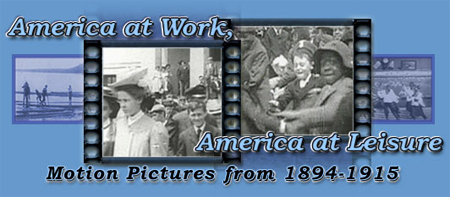Analyzing Primary Sources: Learning from Video Recordings

Video is used to tell stories and provide information. Because we live in a world increasingly dominated by video, it is critical that we teach students how to analyze this powerful primary source that combines moving images with sound and, sometimes, text. In addition to dramatic or documentary films, primary source video recordings include news reports, interviews, press conferences, testimonies, advertisements, entertainment broadcasts, and more. The analysis of video recordings, like primary source images, aligns closely to the Common Core English Language Arts Standards (CCSS), including grade 6-12 Literacy in History/Social Studies Reading Standards and Speaking and Listening Standards 2 and 3.
The Library of Congress is continually adding streaming webcasts to their online offerings. In addition, the American Memory collections provide a good variety of primary source video recordings. (Please note: the most general subject listing for video or films on the Library of Congress is “motion pictures”.
- American Variety Stage: Vaudeville and Popular Entertainment Films, 1870-1920
- America at Work, America at Leisure: Motion Pictures from 1894-1915
- Before and After the Great Earthquake and Fire: Early Films of San Francisco, 1897-1916
- Buckaroos in Paradise: Films of Ranching Culture in Northern Nevada, 1945-1982
- Inside an American Factory: Films of the Westinghouse Works, 1904
- The Last Days of a President: Films of McKinley and the Pan-American Exposition, 1901
- The Life of a City: Early Films of New York, 1898-1906
- Origins of American Animation
- Prosperity and Thrift: Films from the Coolidge Era and the Consumer Economy, 1921-1929
- September 11, 2001: and Public Reaction Video Interviews
- The Spanish-American War in Motion Pictures
- Theodore Roosevelt: His Life and Times on Film
To help students analyze video recordings, you can have them use the Library’s primary source analysis tool and the list of guiding questions provided below, which were adapted from this list.
Video Recording Analysis Guiding Questions
OBSERVE: Identify and note details
- What type of video recording is this (documentary, entertainment broadcast, animation, advertisement, speech, interview, press conference, testimony, etc.)?
- What is this video recording about? What is the main topic or theme?
- What is the title of this video? Is there any other text? If so, what information does it provide?
- What is/are the main setting(s) of this video recording?
- Is there live action? Are there special effects or animation? If so, provide a brief description of what you see.
- Who helped to make (perform, produce, or broadcast) this video recording?
- Are there details that suggest the time period this video recording relates to? Is the creation date listed in the bibliographic record? If the creation date is listed, was this video created at or around the same time period the content relates to?
- What other details do you notice?
REFLECT: Generate and test hypotheses
- What tools and materials might have been used to create this video recording?
- Why do you think this video recording was created? What might have been the purpose of making this video? What evidence supports your theory?
- What tone does the video recording have? Why do you think this tone was used? How does the tone affect the feeling or mood of the video?
- If special effects or animation are present, how do they affect the feeling or mood of the video?
- Who do you think was the audience for this video recording?
- What do you think the creator might have wanted the audience to think or feel?
- How do you feel during and after watching this video recording?
- Does the video recording show bias through words or images? If so, towards what or whom? What evidence supports your conclusion?
- What was happening during the time period this video recording represents? If someone created this video today, what would be different/the same?
- What did you learn from listening to this video recording? Does any new information you learned contradict or support your prior knowledge about the topic of this video?
QUESTION: What didn’t you learn that you would like to know about? What questions does this video recording raise? What do you wonder about . . .
- Who?
- What?
- When?
- Where?
- Why?
- How?
What sources might you consult to learn more?
Please feel free to download and distribute the Video Recording Analysis Guiding Questions document and the primary source analysis tool (but please keep the formats, including logos, intact).
Analyzing Primary Sources: Learning from Audio Recordings
Analyzing Primary Sources: Learning from Images
Analyzing Primary Sources: Learning from Maps
Analyzing Primary Sources: Learning from Music
Analyzing Primary Sources: Learning from Newspapers
Analyzing Primary Sources: Learning from Oral Histories
